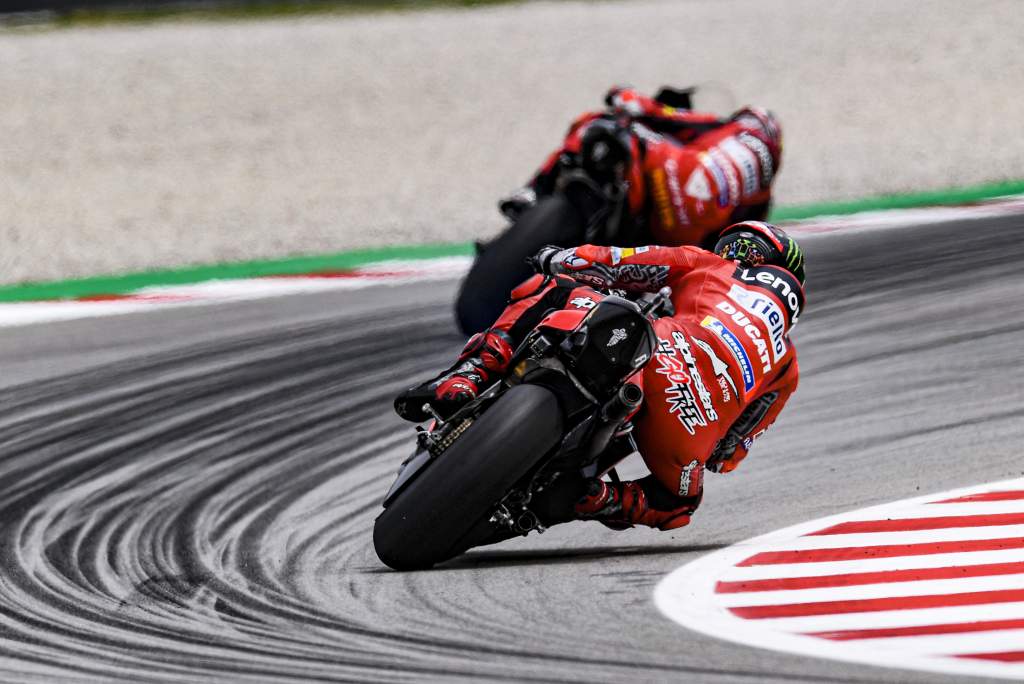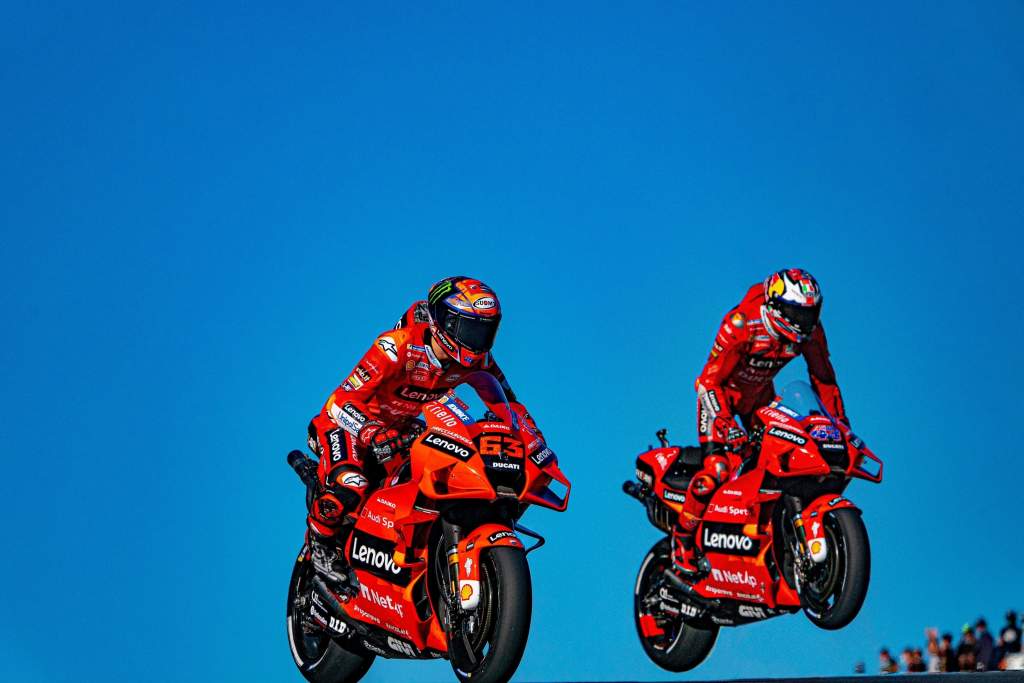For over five years now AVL RACETECH and Ducati Corse have enjoyed a partnership in engine development that has helped to reach some memorable success.
Within the spheres of Engine Calibration, which mainly take place at test beds located at Ducati Corse’s HQ in Bologna, a software tool called AVL CAMEO has helped to optimize the calibration of Ducati’s powerplants in international motorcycle racing.
Listen to “How AVL RACETECH Aided Ducati’s 2022 MotoGP Title Success” on Spreaker.
Calibrating those thoroughbred engines for crucial race weekends, while keeping the attributes of a robust and durable engine is key.
As a result of the AVL partnership, Ducati Corse is saving testbed time – and because of the available models after testing, to “understand and predict the influence of certain engine parameters on the performance and other KPI’s is simpler than with a classical testing method”.

Speaking to The Race about the relationship, the Engine Experimentation Engineer for Ducati Corse, Andrea Bellini, said that ”the complexity of our work has increased a lot in recent years”.
“That’s because the classic idea of calibration is not enough to build up all the knowledge needed now to control all the parameters and to have a global idea of all the important aspects which an engine can offer to the rider.
“The rideability of the engine is really important not only for the increase in the performance in terms of horsepower or reducing fuel consumption, but also now with modern engines the calibration is a complex web of activities, which produce all the quantities needed to control the whole powerunit system.”
Model-based calibration using real data performed on the racetrack, or on the testbed doing specific tests on a dyno rolling testbed, collates a lot of different data. AVL RACETECH then uses this to build a specific model.
AVL Application Engineer Helmuth Grassberger, who is a specialist of the tool and calibration method, says that the approach from Ducati Corse got the creative juices flowing from the outset.
“We thought about ways and tools of how to improve the calibration of the race engines,” says Grassberger.
“We came up with some suggestions, first of all, to look at their data and build engine models, and also in the next step to integrate tools and methods to increase the efficiency on the engine testbeds in order to save time and engine life on the competition engines.”

Over several years this paid off handsomely with the eventual creation of the CAMEO software package.
Cameo originated in a time where, according to Grassberger, “the control units of combustion engines got more and more complex and there were more and more actuators”.
These had to be controlled and some calibration executed in order to let the control unit know what the best method is.
“In these times,” adds Grassberger, “the calibration engineers had to struggle as there were so many actuators that you’d adjust to get a different behavior, manually with just trying out it was not possible anymore.
“So, the design of an experiment idea, not just trial and error, evolved. Another very important aspect was to perform these tests to run a design of efficiency and reliability.”
This is also a test of automation parts which Grassberger says is “important because in the recent developments these two things come together by measuring what is the behavior of the engine.
Additionally, while the test is ongoing, a model is built “steering only to the relevant parameter sets’ that will help in the calibration itself”, according to Grassberger.
“How it’s specifically applied, once on the data that is already measured, or applied as an automation tool, mean that in the best case it comes together,” adds Grassberger.
This software originated in Internal Combustion Engines. But now it’s also widely used in Electric Vehicles too, as well as inverter calibration, fuel cell development and several other applications.
The fruits of the AVL RACETECH and Ducati Corse efforts were suitably rewarded last year when Francesco Bagnaia took the 2022 MotoGP crown in a stellar season, in which he and Ducati won seven races.




